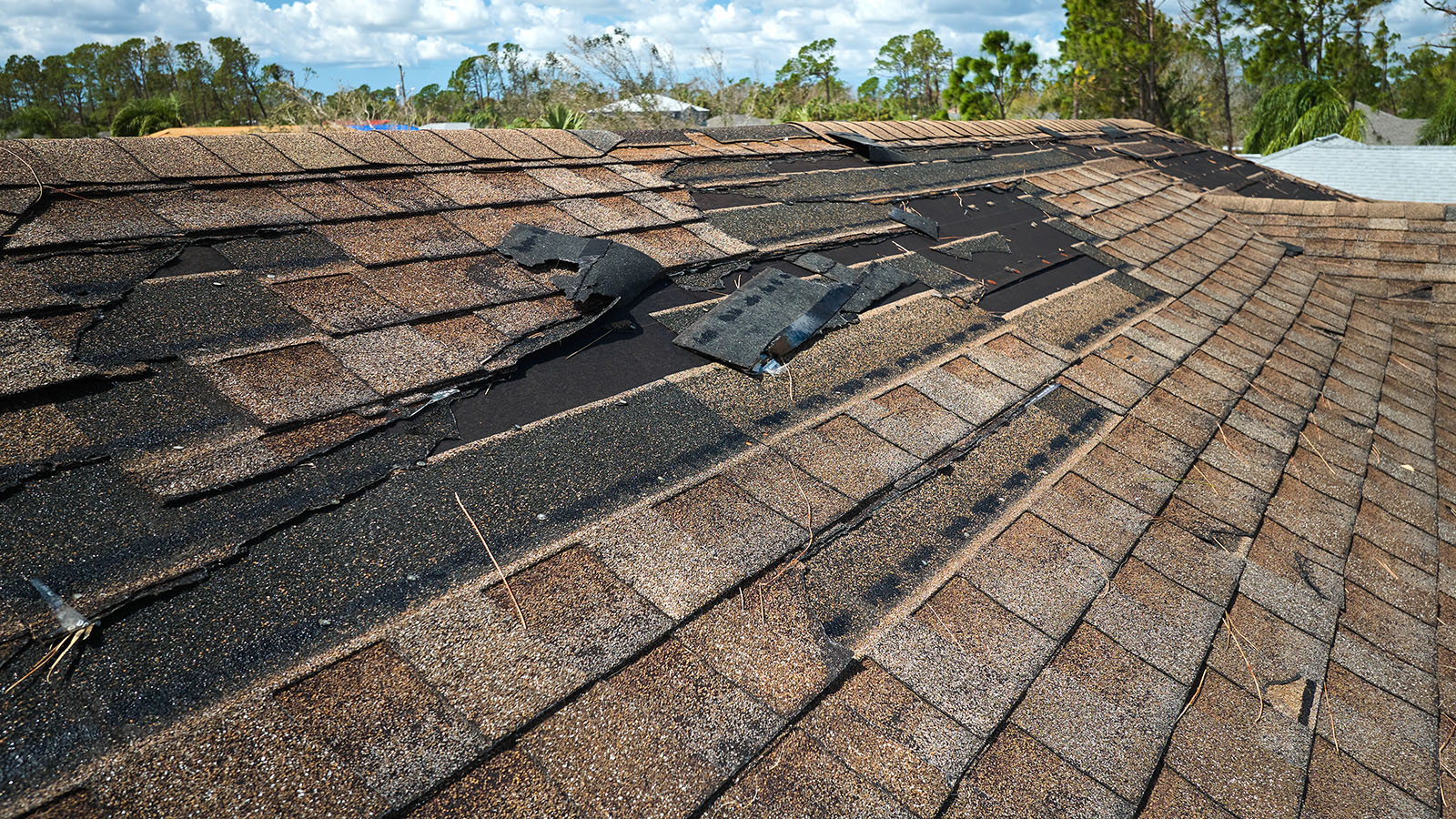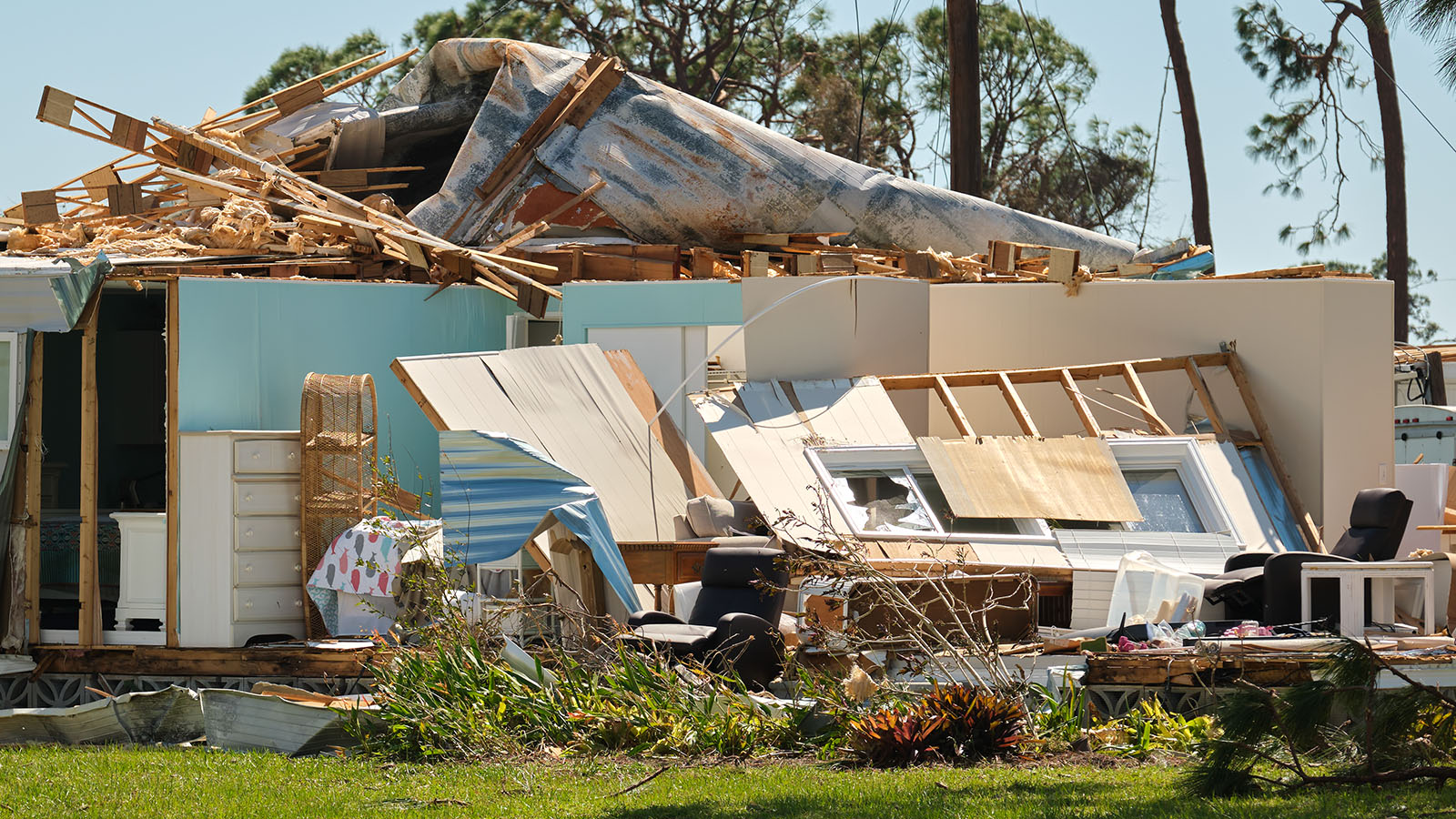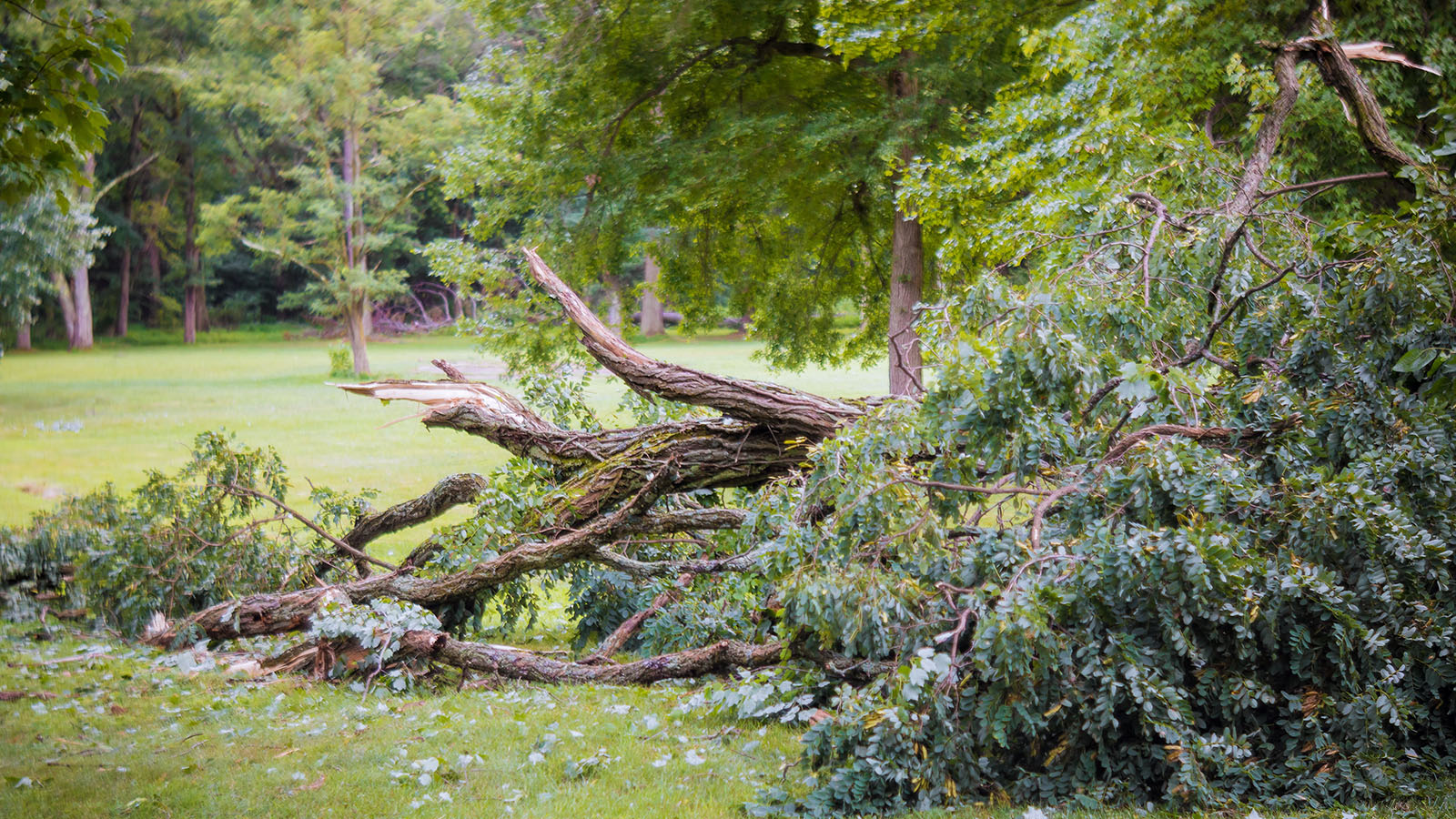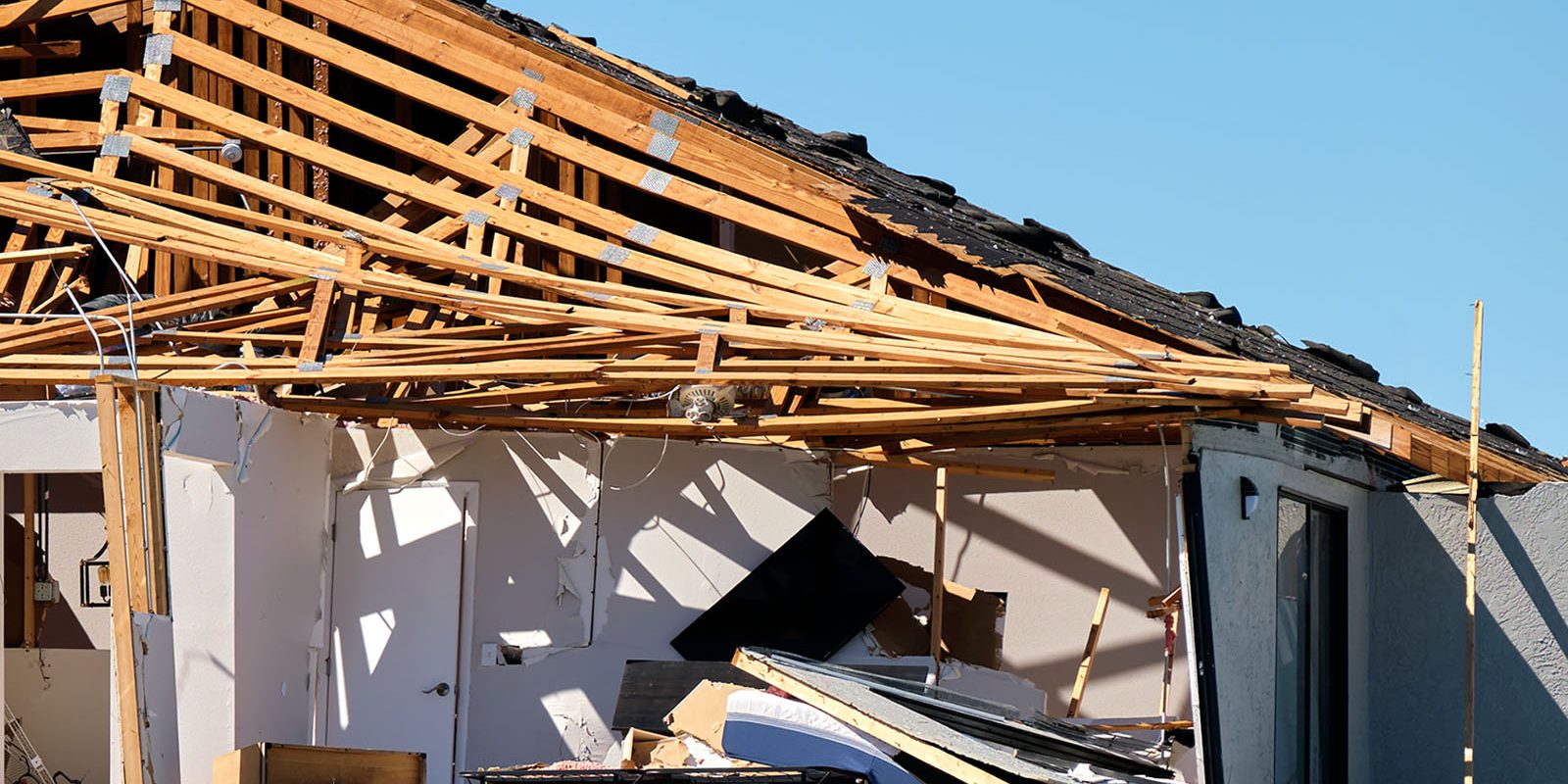7 Steps to Protect Your Home from Storm Damage
Living in areas susceptible to severe weather during storm season can be daunting, but taking steps to protect your home from storm damage can help ease your mind. Storms and strong winds can cause significant damage to your home, and taking this risk seriously is essential. Whether it’s high winds, heavy rain, or hail, bad weather can wreak havoc on your property, resulting in costly repairs and potential safety hazards.
Fortunately, there are steps you can take to reduce the impact of a severe storm on your home. Following these seven steps, you can take the necessary precautions to minimize damage to your property.
From regularly trimming trees to reinforcing windows and doors and securing lawn furniture, there are several things you can do to protect your home from damage. Whether you live in an area prone to hurricanes or severe thunderstorms, preparing your home for bad weather can make all the difference. By being proactive and taking the necessary precautions, you can ensure your home is as safe as possible during storm season. In this article, we will explore seven steps you can take to protect your home from damage.


Is Storm Damage Something to Take Seriously?
Storm damage is a serious matter that can cause significant harm to your property, and it should never be taken lightly. It’s crucial to assess the damage and take necessary steps to repair it as soon as possible to prevent further deterioration and potential risks to you, your family, or your business.
When it comes to storm damage, it’s not just about wind damage or fallen trees; hail, heavy rain, and lightning from heavy storms can also wreak havoc on your property. Here are some reasons why the damage is something to take seriously.
Safety Concerns
Storm damage can lead to dangerous situations. Fallen trees, damaged roofs, down power lines and broken windows can create hazardous conditions for people living or working in the affected areas. It’s essential to prioritize the safety of yourself and those around you by evacuating if necessary, securing the premises, and contacting professionals to inspect the damage.
Property Damage
Storms can cause extensive damage to your property, including roofs, walls, windows and siding. Ignoring the damage can lead to more significant problems, such as drainage problems that result in water intrusion, mold growth and structural issues. Repairs can also become more expensive if left untreated for too long.
Insurance Claims
If you have insurance coverage for your property, it’s essential to take the necessary steps to file a claim as soon as possible. This ensures that the damages are covered and the repairs are completed quickly. Delaying the claim can result in higher out-of-pocket costs, missed deadlines, and even denied claims.
Resale Value
Any damage to your property can affect its resale value. Buyers are more likely to purchase a property that is in good condition. It’s essential to make necessary repairs to restore the property’s condition and prevent further deterioration, which can impact your property’s resale value.
Storm damage is a serious matter that requires immediate attention. Remember to consider the impact that a storm can have on your property. Contacting professionals to assess and repair the damage immediately can help mitigate the risks and prevent further damage.


What Steps Can You Take to Prevent Storm Damage?
While it is impossible to prevent damage completely, there are steps that you can take to protect people and reduce the impact of a storm on your property as part of homeowner’s storm prep. Here are some actions you can take to prepare your property for a storm:
Keep Trees Trimmed
To avoid potential damage to your property during a storm, regularly trimming trees can prevent broken branches from falling. It’s advisable to hire a professional arborist to inspect and prune trees on your property, ensuring the job is done safely and effectively. Ignoring problematic tree limbs can result in significant property damage and safety hazards such as blocked roads, structural damage, and electrical hazards.
Taking care of your trees by regularly trimming and addressing problematic tree limbs can help prevent downed trees and minimize the risk of damage to your property. Hiring a professional arborist can ensure the job is done safely, avoiding potential safety hazards and reducing property damage.
Secure Outdoor Objects
Lawn furniture, decorations and other outdoor items can become hazardous flying objects during a severe storm. To prevent these items and yard debris from causing damage to your home or endangering the safety of yourself and others, secure them or bring them inside before the first wind inside the storm hits. Make loose fence posts wind resistant to prevent damage from high winds.
Reinforce Windows and Doors
During heavy winds, loose fence posts, siding, and shingles can become dislodged, causing significant damage to your neighbor’s property. High winds can also cause windows and doors to shatter, leaving your home vulnerable to further damage. To prevent this, reinforce windows and doors with storm shutters or coverings. Additionally, repair loose siding, shingles, and fence posts before the storm season to prevent them from becoming projectiles during a storm.
If your siding is loose, it’s crucial to repair it before the storm season. Loose siding can be a significant issue during high winds. It can cause extensive damage to your property if left unattended. Check your siding for loose nails or panels and secure them with the appropriate fasteners. Additionally, if you have a wooden fence, check for loose posts and secure them with cement or additional braces to prevent them from becoming dislodged during heavy winds. By taking these precautions, you can reduce the impact of severe weather on your property and keep your home and family safe.
Clean Gutters and Downspouts
During a bad storm, blocked gutters and downspouts can exacerbate the damage caused by heavy rain. Water overflow can damage the roof and walls of your home, resulting in costly repairs. To prevent water damage during a bad storm, it’s crucial to regularly clean gutters and downspouts. This will allow rainwater to flow freely through the drainage system and prevent water from pooling on your home’s roof, which can lead to leaks and other types of water damage. These simple steps can help protect your home and to avoid major storm damage.
Check for Leaks
Inspecting your home’s rooftop, windows, and doors for leaks is crucial in protecting your home from storm damage. Loose shingles or improperly sealed windows and doors can leave your home vulnerable to water damage during severe storms or heavy rains. This can lead to costly repairs and even mold growth. As spring rains start, it’s important to ensure your home is properly sealed to prevent water intrusion.
To inspect your roof, look for any loose or damaged shingles that must be repaired or replaced. Ensure any gaps or holes when replacing shingles in the shingles are filled and sealed properly. Check for cracks or gaps that allow water to enter windows and doors. Replace any damaged weatherstripping and apply caulk as needed to ensure proper sealing.
Install a Sump Pump
If your property is prone to flooding, installing a sump pump in the basement or crawl space can be a game-changer. It removes excess water from the area. It redirects the water flowing through it away from your home, preventing basement flooding and water damage. It’s essential to install one if you live in an area with heavy rainfall, where the water table is high, or if you have experienced flooding.
Sump pumps come in different types, and choosing the right one for your needs is crucial. A submersible sump pump is the most common type installed in a basement or crawl space sump pit. When the water level in the pit rises, it automatically turns on and pumps the water out of the house. A pedestal sump pump is another option, and it is installed above the sump pit. Choosing the correct type of backup sump pump for your property is essential to prevent basement flooding and water damage.
Have an Emergency Kit
In addition to the steps mentioned above, it’s also important to have a storm safety plan in place. Your plan should include a clear evacuation plan, a list of emergency contacts, and a designated safe room in your home where you and your family can take shelter during severe weather.
Preparing an emergency kit with first aid supplies, a flashlight, batteries, a radio, and non-perishable food and water can also be crucial to your storm safety plan. This kit can help ensure that you and your family have essential supplies in an emergency.
Remember, while taking steps to protect your home from damage is crucial, your safety and the safety of your loved ones should always be the top priority. Stay informed about upcoming storms and follow the guidance of local authorities to keep yourself and your family safe during severe weather.

